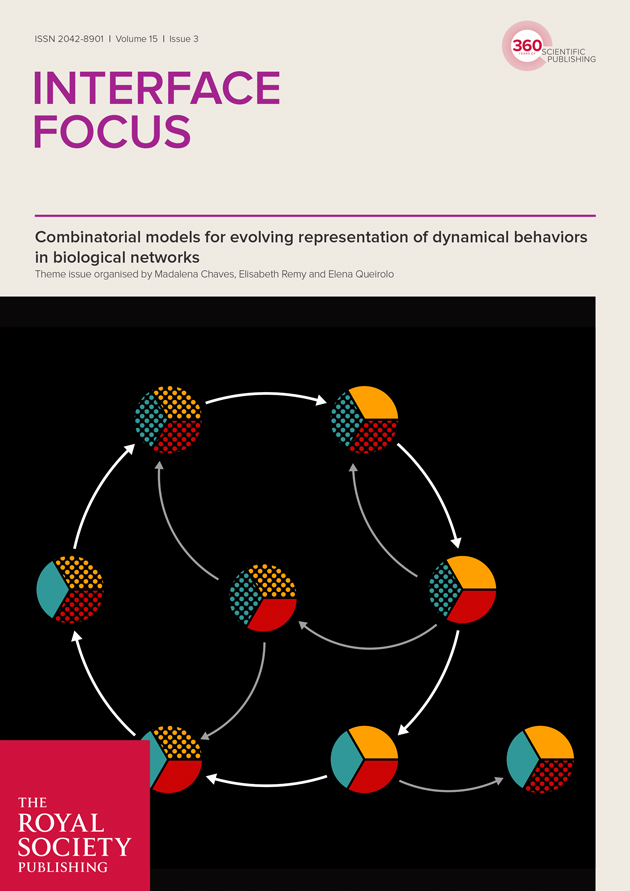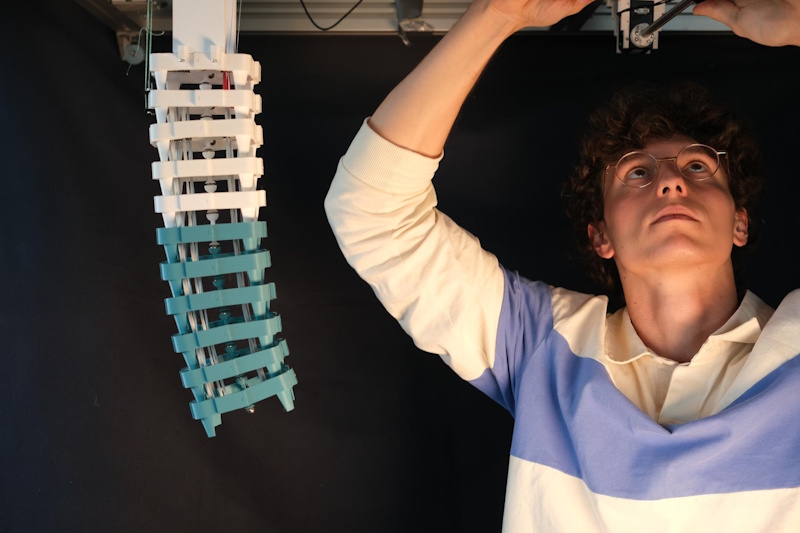Interface Focus recently published a theme issue on 'Combinatorial models for evolving representation of dynamical behaviours in biological networks’. In this blog post, Guest Editors Madalena Chaves, Elisabeth Remy and Elena Queirolo tell us more.

Please can you introduce the issue and tell us what it’s about?
This issue focuses on the use of qualitative mathematical models, such as discrete and logical models, in the study of biological regulatory networks. Such regulatory networks often contain dozens to hundreds of components, making them very challenging to analyse using the more classical continuous frameworks. While continuous models are valuable to describe the regulatory processes in detail - describing, for instance, the formation of complexes between two proteins - discrete models provide a more abstract representation. They focus on qualitative descriptions of the dynamical behaviours, rather than quantitative descriptions. This issue illustrates logical and other discrete frameworks, that use only a few or even no parameters, where in some cases exact solutions can be computed, and their usefulness to study biological systems.
What is the importance of taking a cross-disciplinary approach to your research?
Many of the problems we study, such as ensuring solutions remain positive or identifying which components can be controlled and measured, arise directly from biological questions.
The fact that we can obtain exact solutions is important, both for mathematics and biology: these solutions, even when derived from simplified systems, provide guidance on the main dynamics between the core elements of the biological networks under study. These models often suggest new operational modes for the network and indicate "where" to look for such operatory modes. And, finally, these theoretical results give us confidence that model simulations can both represent and predict different biological scenarios.

How was your experience publishing with Interface Focus?
It was an engaging, dynamic and welcome experience. The Focus team were very helpful and supple, providing all the necessary details and managing all communication between referees, guest editors, and authors. We are also very grateful for the flexibility allowed in the issue: we wanted to include different forms of contributions, from original research to review articles and a tutorial, and the Focus team nicely accommodated all of these. The flexible deadlines for article submission were also much appreciated by the authors.
What are the next steps for this line of research?
Several directions are open, including the comparison and combination of discrete models and their combinatorial elements with more conventional models (continuous ODEs, PDEs, neuronal networks), and their simulations. Discrete and logical descriptions can provide useful complementary knowledge to the naturally more detailed continuous models analyses.
The combinatorial aspects of discrete models, such as the large number of parameter space regions allowing for distinct dynamical behaviours, can be difficult to manage. We need to find strategies to deal with and extract relevant cases from the, often large, list of possibilities. More generally, software development is crucial to make these analysis techniques available.
Another promising research direction involves more direct interaction with biologists to design new synthetic biological systems, either as Proof of Concept systems but also for biomedical or biotechnology applications.
Main image credit: Stages and transitions of our piecewise-linear model of the circadian clock. Protein concentrations and derivatives thereof affect each other in such a way that the overall system can generate repeating cycles. Under certain conditions the cycle of white transitions is the only possible behaviour. Originator: Benjamin Böbel (https://doi.org/10.1098/rsfs.2025.0008).
Keep up to date with the latest issues of Interface Focus by signing up for content alerts, and browsing previous theme issues on the journal website.



